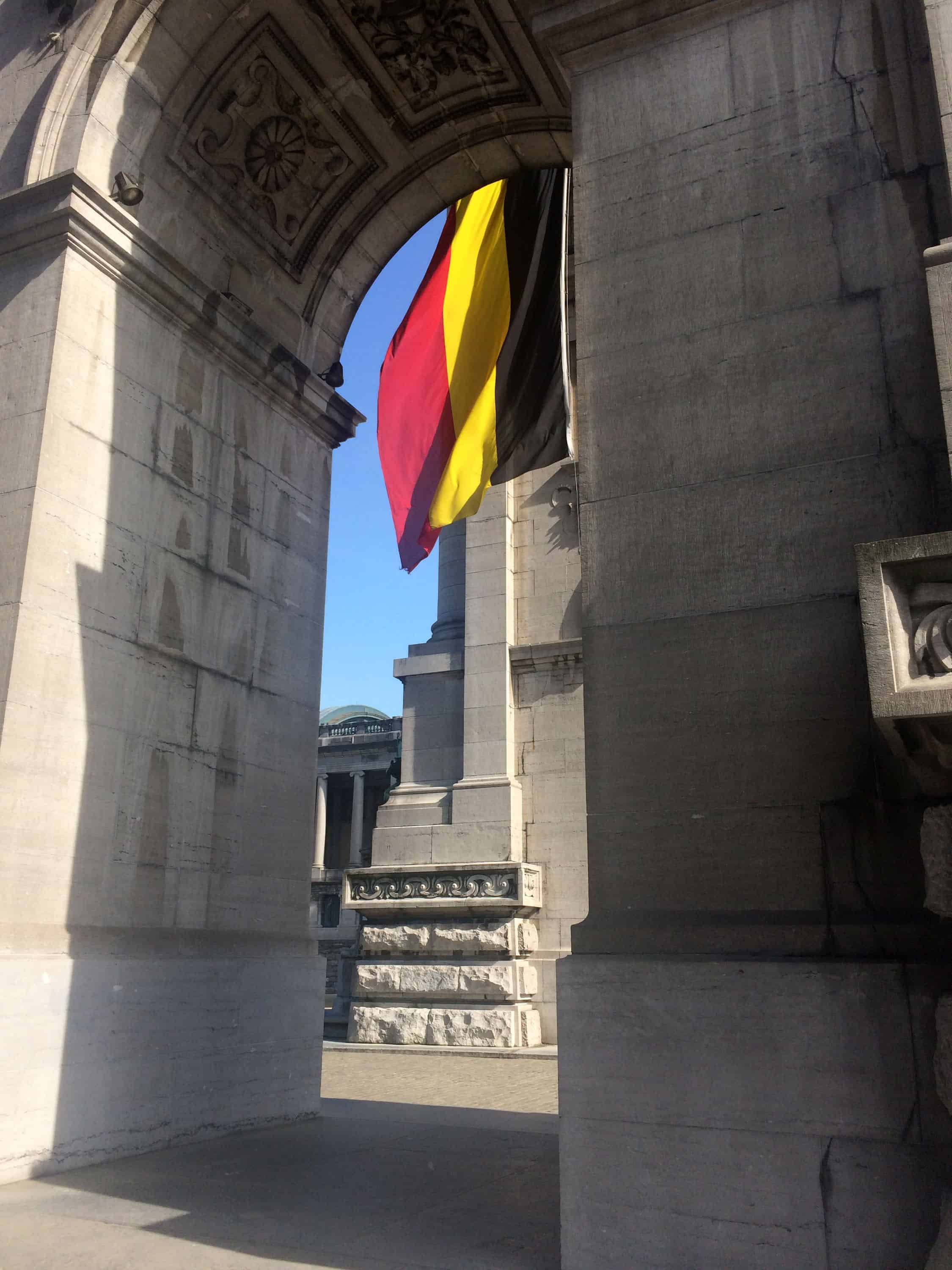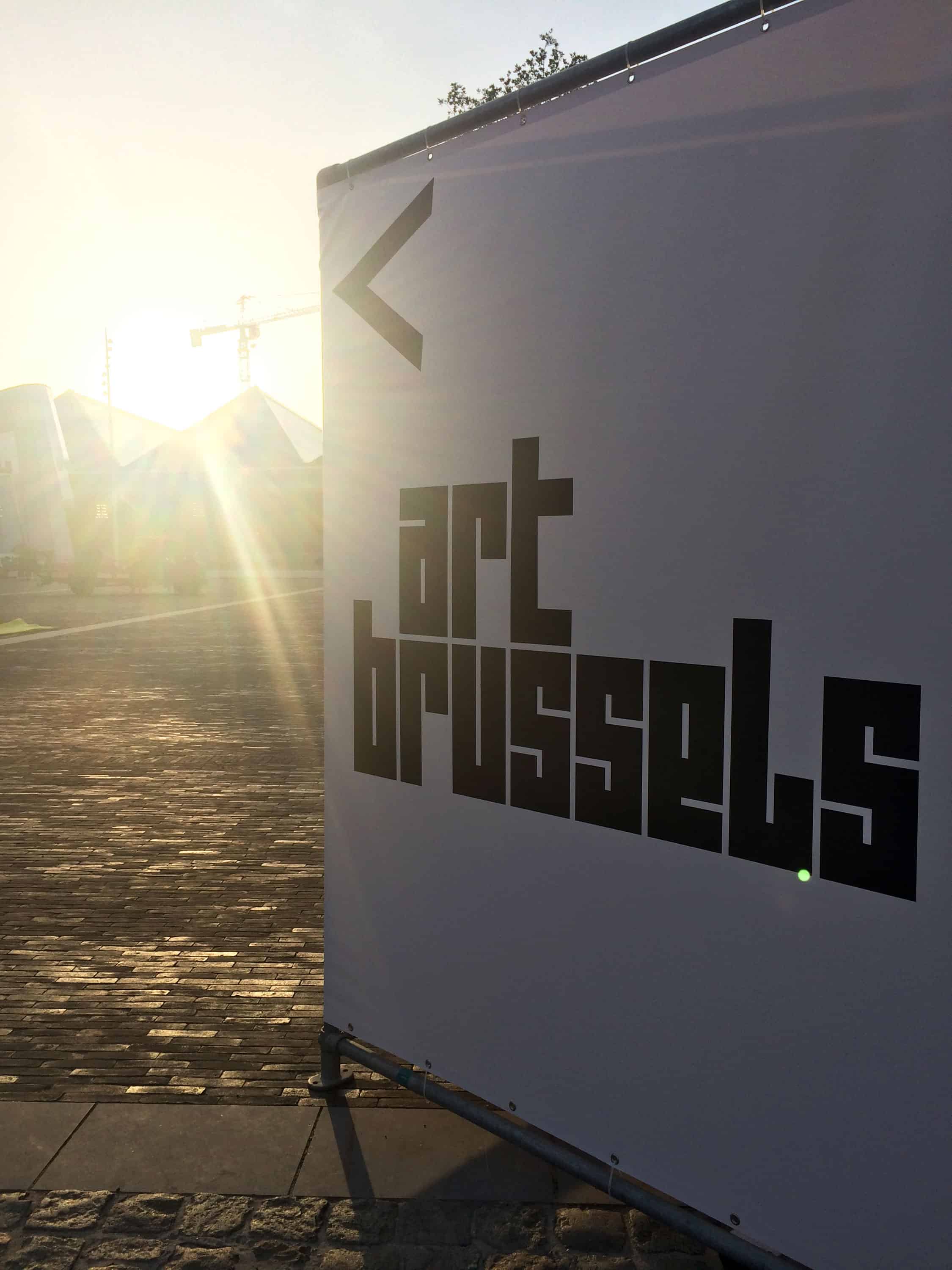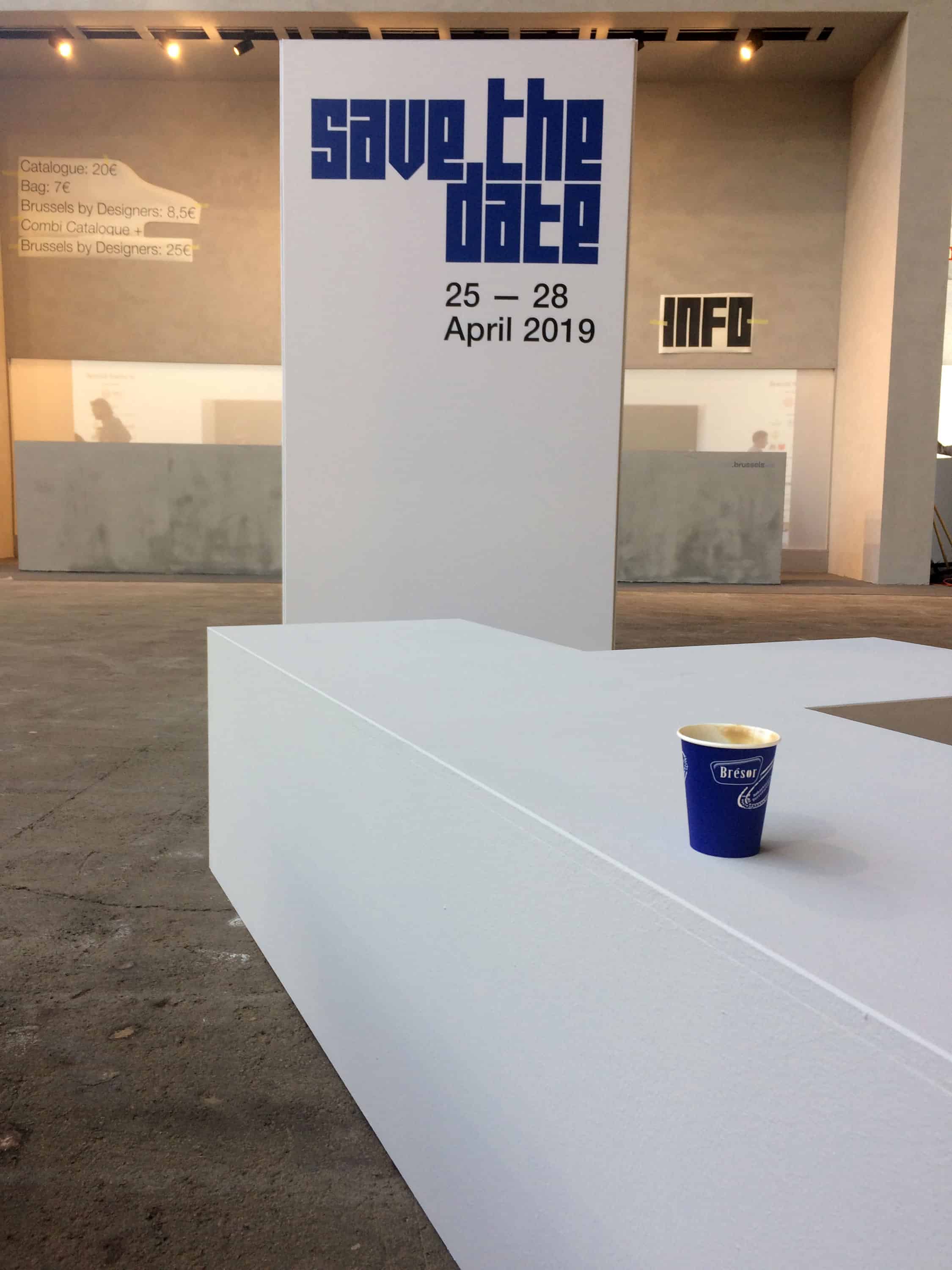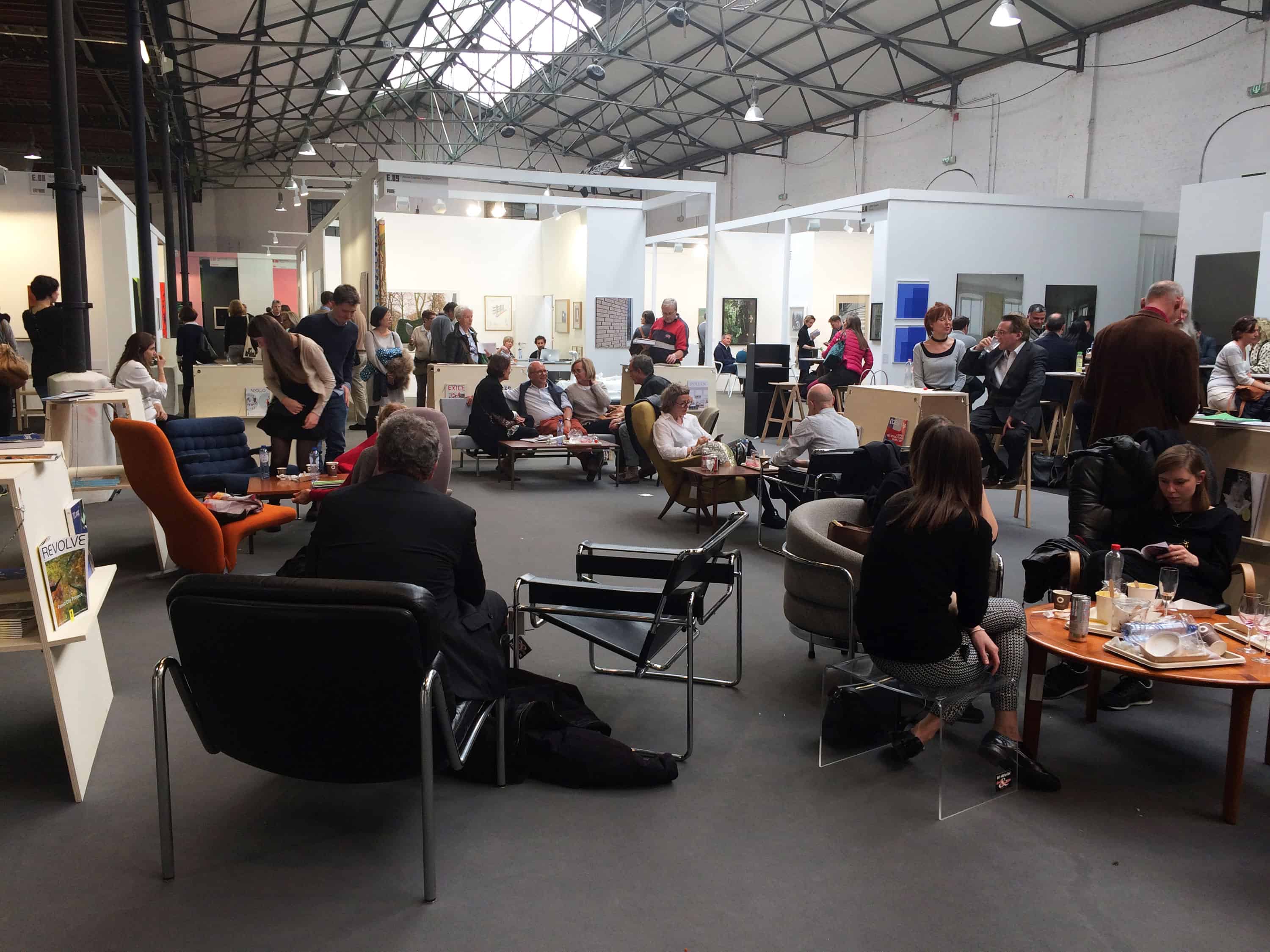Next week we’re heading to Art Brussels, one of the most renowned contemporary art fairs in Europe. But before we catch our flight we spoke with the Managing Director of Art Brussels, Anne Vierstraete, on how the art market is changing, the impact of the fair on the Belgian art scene, the value of travel and the selection process.
Anne Vierstraete, credit: David Plas
Dobromila Blaszczyk: Every year you play a special curatorial role in the exhibitions and talks. You also collaborate with local galleries and museums. How do you involve the Brussels art scene during the art fair?
Anne Vierstraete: At Art Brussels, we always aim to stay current by confronting topics and themes that are relevant and appealing to contemporary audiences through our extensive artistic programme. Our artistic projects allow us to bring a highly curated aspect to the fair, inviting visitors to experience something slightly different alongside the booths. Besides, the fair is also about experiencing what makes Brussels such a vibrant art scene. The different players of the Brussels scene, the galleries, the institutions, the curators, the artists, the collectors and art enthusiasts are very close and, as Brussels is a rather small city, everything is tightly interconnected. From the smallest artist-run spaces to the most renowned art institutions, all plan their most outstanding shows to run during the fair. And of course, through the OFF programme, the fair partners with this crowded scene and we promote what the whole city has to offer alongside our own artistic programme. Therefore, Art Brussels is a platform that contributes a huge amount to the globalisation of the Brussels and Belgian art scene.
DB: This year marks the 37th edition of Art Brussels. Do you think that the art fair has played an influence on the Brussels and Belgian art market? How has this situation changed?
AV: Over the last 50 years, Art Brussels has contributed to the development and prominence of the Belgian art scene in a significant way. It is the most important contemporary art event in the Benelux and its DNA is tightly tied to the local scene, among which of course, are the collectors. Belgium’s rich and vibrant contemporary art scene has developed over the last fifty years. It has grown a tradition of “collecting” that distinguishes it as a country said to have one of the highest number of collectors per capita in the world. I think that the extraordinary geographical situation of Belgium, being a small country located in the midst of Europe, has facilitated cross cultural exchanges, which may have nourished the historical curiosity of the Belgians for foreign cultures and favoured the openness and interest for influences of all kind.
Art Brussels attracts adventurous and curious international collectors of all ages, as well as Belgian collectors, who are known for their engaged approach and penchant for risk-taking in their collecting. The fair has a high rate of returning galleries who enjoy the benefits that come from the consistent and in-depth engagement that the Art Brussels collector base shows.
DB: What was the trigger point when you, the Art Brussels’ team and founders decided to organise an art fair for the first time?
AV: Going back to the origins of the fair in 1968, the Foire d’Art Actuel was set up by eleven galleries as a platform to show the newest trends in art at that time, driving the wider public to get involved with contemporary artistic creation. It was all about discovering new forms of art, getting to know artists and being introduced to the gallery owners, who were there to identify new artists and accompany blooming talents in their artistic development, promoting them both in Belgium and abroad.
To this day, what defines Art Brussels is that in addition to the established and mid-career artists on show, the fair has always had an exciting Discovery section, dedicating a large part of the fair to emerging talent. The fair demonstrates a passionate and distinctive approach to contemporary art, which appeals to fans and collectors fleeing the trends of the moment and the art already on show in other major fairs.
DB: How does your art fair respond to new trends in communication, new media and markets?
AV: In response to permanent change, continuous adaptation and the newest business models, this year, Art Brussels is launching the INVITED section. This diverse section is comprised of nine galleries that have never participated in the fair before, and includes galleries that are championing the shifting art market and challenging the traditional gallery model. They are given a carte blanche for their booth at the fair.
The digital is another major change impacting the way business is done. In our increasingly digital world, social media pushes people to post images of individual artworks, encouraging an appreciation for and promotion of the artists themselves. Social media contributes to a fair’s international visibility, allowing users to engage with the themes present at the fair all around the world.
This drastic change in communication enables global audiences to engage with and experience the fair, the artworks, and the conversations surrounding the contemporary art on show, regardless of their location. Social media and digital initiatives have also enabled Art Brussels to extend the life and ethos of the fair beyond the specific dates and to continue to support emerging artists, galleries and museums by highlighting various projects through social media posts.
DB: Working on an art fair is not just working for one month before the fair. It is a full-time job that last all year round. How many people work with you? Do you have an office?
AV: Our offices are located in Brussels and an enthusiastic team of seven people, including myself, work for Art Brussels the whole year round.
DB: How do you attract new galleries? How important is constant networking and travel?
AV: It is essential to stay permanently informed about the art market and connected to what’s going on both on a national and international scale. Everyone in the team is passionate about art and fortunately, information circulates well within our circle. Together with the Head of Galleries, Nele Verhaeren, we stay in close contact with our exhibiting galleries and work on continuous discoveries of new galleries. In this context, we travel as much as possible in order to visit other art fairs abroad and organise trips to cities with a high concentration of interesting galleries. You always learn a lot from meeting people and discovering their gallery within their own life environment. On top of that, members of our selection committees feed us tips about whom to approach and share their latest findings of interesting newcomer galleries.
DB: What does the selection process look like? What are your criteria? What kind of galleries and artists do you look for?
AV: There is a list of specific and very precise criteria that has been formulated and which is circulated to the international gallery selection committee (comprised of Belgian as well as international gallerists), and to the DISCOVERY selection committee (comprised of gallerists and international curators). Each proposal is looked at carefully and evaluated on the basis of these respective criteria. We look into the quality of the artistic proposal, the artists, the track record of the gallery, and of course the quality of the overall presentation. The latter is very important as the presentation of art is often compromised at art fairs. We also have specific rules in place about how many artists a specific gallery can show in a given space to avoid overkill. In DISCOVERY we also pay a lot of attention to the emerging nature of the artists whose work is shown. We aim to ensure that the committees remain objective throughout the selection process. An enormous amount of preparation goes into reviewing more than 300 proposals each year.
DB: What about the application fee?
AV: A modest application fee is required in order to endorse the commitment between the candidate gallery and the fair; there’s a lot of processing of application forms and the gallery is committed to participate if the selection committee retains its proposal for the upcoming edition of the fair.
DB: Some dealers find the art fair a must-see. Others, especially smaller, resign more and more often. They say that at some point it stops making sense, it’s irrational because of the high costs, the exchange rate, shipping… What do you think about their fears? How would you convince them to take part in your fair?
AV: The spread of fairs in recent years is very much a hot topic and I can see why concerns around both exhibitor and buyer fatigue would affect many fairs globally. However I think that this is something that can be – and is being – countered by fairs, which can retain a distinct personality, true to their locality, rather than solely looking to the international market. This is something that Art Brussels strives for through our dedication to our local and regional base, and deep-rooted connection to the community in which we’ve existed for over 50 years.
I believe in the essential role that international art fairs like Art Brussels play in order to diversify what’s on offer on the global art market, allowing galleries to address specific collectors’ communities with whom they can build long-term relationships, through a distinctive profile, a dedicated approach towards the richness of art historical content and a close attention to quality.
So far, art fairs are the best way to offer a unique market place guaranteeing a high potential for networking and a broad spectrum of discoveries and encounters in a minimum of time, all concentrated in one location. Fortunately, the physical encounter with the artwork, and also between people sharing common interests, still dominates the virtual opportunities of today’s digital world.
DB: What are the most visible trends in the art market at the moment? What type of art is gaining popularity among collectors?
AV: Painting remains dominant and if we look deeper into the proposals of participating galleries, there seems to be a pronounced interest for geometric abstraction. But installation based works and art dealing with the integration of new media or digital imagery are also very well represented. One of the advantages of a fair is to offer a very diverse spectrum of art, thus pleasing numerous art lovers with a wide range of interests and tastes.
DB: Have you noticed any changes in how galleries arrange their booths and think about the arrangement of space and presentation of their works?
AV: Competition in the art world is acute, but interesting and positive in the way that it obliges you to stay alert as to what is going on. It demands you to identify the exact components of your DNA and its correspondence with the kind of market you address. It forces you to question your model in comparison to others operating in the same market. This is true both for art fairs and for galleries. We notice that galleries make huge efforts and investments in order to show up with outstanding proposals, among which include site-specific art works developed by one of their represented artists. The aim is of course to capture the attention of the collectors and curators during the fair, in an environment where there is an abundance of stimuli and where every player competes for the attention of the same audience. Quite a challenge…
Art Brussels 2019














